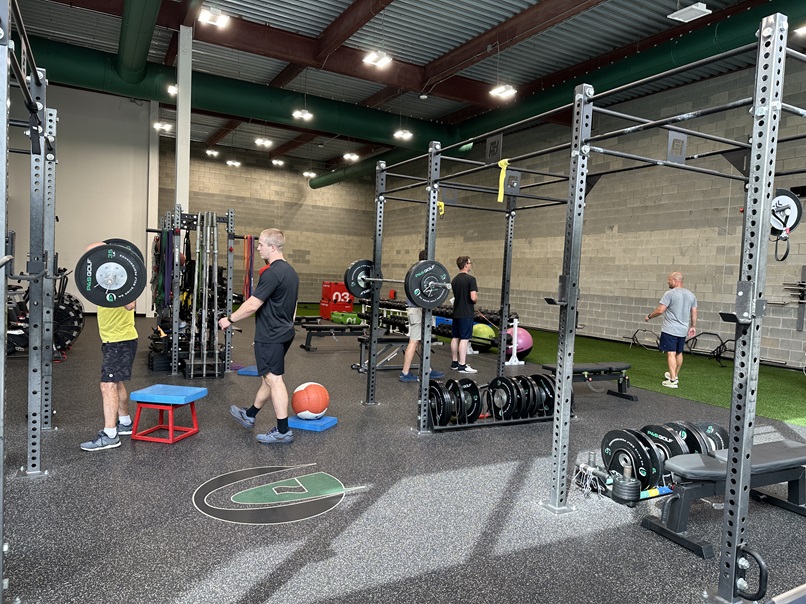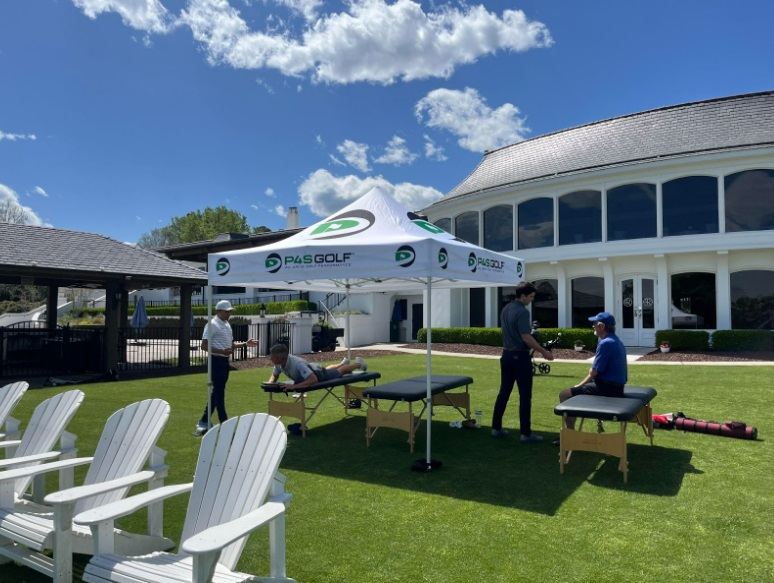When it comes to golf club management, rounds played, club usage, and many other metrics are used to evaluate the health of a club and its membership.
When evaluating all the areas of a club, the fitness side of things is rarely seen as a revenue center but more so as an expense on the balance sheet.
While historically accurate and appropriate, the new age of golf clubs is here, and a shift is happening. If it isn’t happening at your club, then you are behind.
When deployed properly and with intelligent value generation in mind, the fitness side of a golf club can transform it from “the third place” after home and work into “the place.”

When done correctly, the fitness side of a club is leveraged to support the major profit centers and, in doing so, becomes a profit center itself while also increasing the lifetime value and gross profit of every member.
Let me explain…
Golf is generally the largest revenue generator for a club. Usage is generally one of the leading predictors for members who are most likely to churn out.
Over 50% of golfers suffer from low back pain at any given point in the season, and the average time missed because of the injury is over 2 weeks.
If a member is hurt and cannot utilize the main revenue center, the club is not making money and a member is closer to churning out as they aren’t extracting value from the club. Neither situation is good for either party.
Most golf clubs with a fitness center offer personal trainers or fitness classes for members and charge well below market prices, hoping this will drive utilization.
For example, we commercially have club members choosing to spend $500/month or more with us at P4S Golf instead of utilizing their clubs.
The crazy part is that the clubs already have fitness centers that are more convenient and cheaper, but club members are making value decisions, not price-based decisions.
This is where the historical model of clubs and their positioning of fitness swing and miss big time.

Based on our database of over 15,000 golfers at P4S Golf, the average golfer who does the right things in the gym returns from injury 12x faster than one who does not.
Put in simple terms, golfers participating in a good golf fitness program would miss 2 days due to back injury vs. the average 14 days (2 weeks)! That is a MASSIVE difference. Now, let’s take this one step further.
Let’s say the club where this theoretical member hurt their back had a Physiotherapist on staff or contracted one to come a couple of days per week.
What if the member who hurt their back came to the club to rehab it?
This would certainly solve the usage issue, and I can tell you from experience at clubs that a Physiotherapist commands more per hour than a trainer, which means the club can make more per hour of usage by members.
This simple implementation keeps the member utilizing the facility while also continuing to feed the club with revenue, replacing any golf revenue with fitness center revenue. Both sides win here.

New Situation: A golfer participating in a golf-specific fitness program.
Now, let’s go crazy and think about a situation where the golfer who hurt their back above had been engaged in a fitness program specific to golf in the first place and didn’t even get hurt…what would that look like?
From experience, it looks like this: On average, golfers are willing to pay at least $200 more per month for the specific program and come to the fitness side at least twice a week.
This increases a 1-2x/week golfer’s club usage by 50% to 100% and obviously reduces churn likelihood!
Also, based on the earlier mentioned research we have done, they are less likely to get hurt, which keeps them playing an average of 2 weeks more per year, also increasing usage.
Finally, while most clubs are worried about acquisition and growing membership, attrition due to aging and people no longer playing golf is a massive leak in the proverbial bucket.
When a golf fitness program is done correctly, the average golfer will not only improve their mobility and decrease their injury risk, but they will also gain 10 yards on average in the first 10 weeks and 20 yards in the first year.
This is huge for more reasons than we have space for here, but the biggest one is that the number one reason people stop playing golf is that their bodies fail them, and golf is no longer fun.
The number one thing that makes golf not fun is losing so much distance that the course becomes unplayable.

Impact of a solid golf fitness program
I’d like to finish with a simple math demonstration to illustrate the impact a solid golf fitness program at your club can have on your churn.
The average golfer loses 14 yards from their 50’s to 60’s, 12 yards from their 60’s to 70’s, and another 10 yards every decade thereafter if they are not participating in a science-backed golf fitness program. 14 + 12 + 10 = 36 yards LOST
If the average golfer is participating in a golf fitness program, at P4S Golf we have seen a decrease in the loss to 4 yards from 50’s to 60’s and then 5 yards and 3 yards per decade after that. 4 + 5 + 3 = 12 yards LOST
In the first year of doing a golf fitness program, a golfer sees an average of a 20-yard gain in the distance. 20 Gained – 12 lost = 8 gained
So…
Average club’s golfer not doing a golf fitness program from 50 to 70 years old LOSES 36 yard loss (4 clubs)
Average club’s golfer doing a golf fitness program from 50 to 70 years old GAINS 8 yards (1 club).
Which golfer do you think is more likely to stay at a club and enjoy utilizing the golf and fitness facilities?
The author: Chris Finn, Founder/CEO P4S Golf. Golf Digest Top 50, Titleist Performance Institute Business Expert
